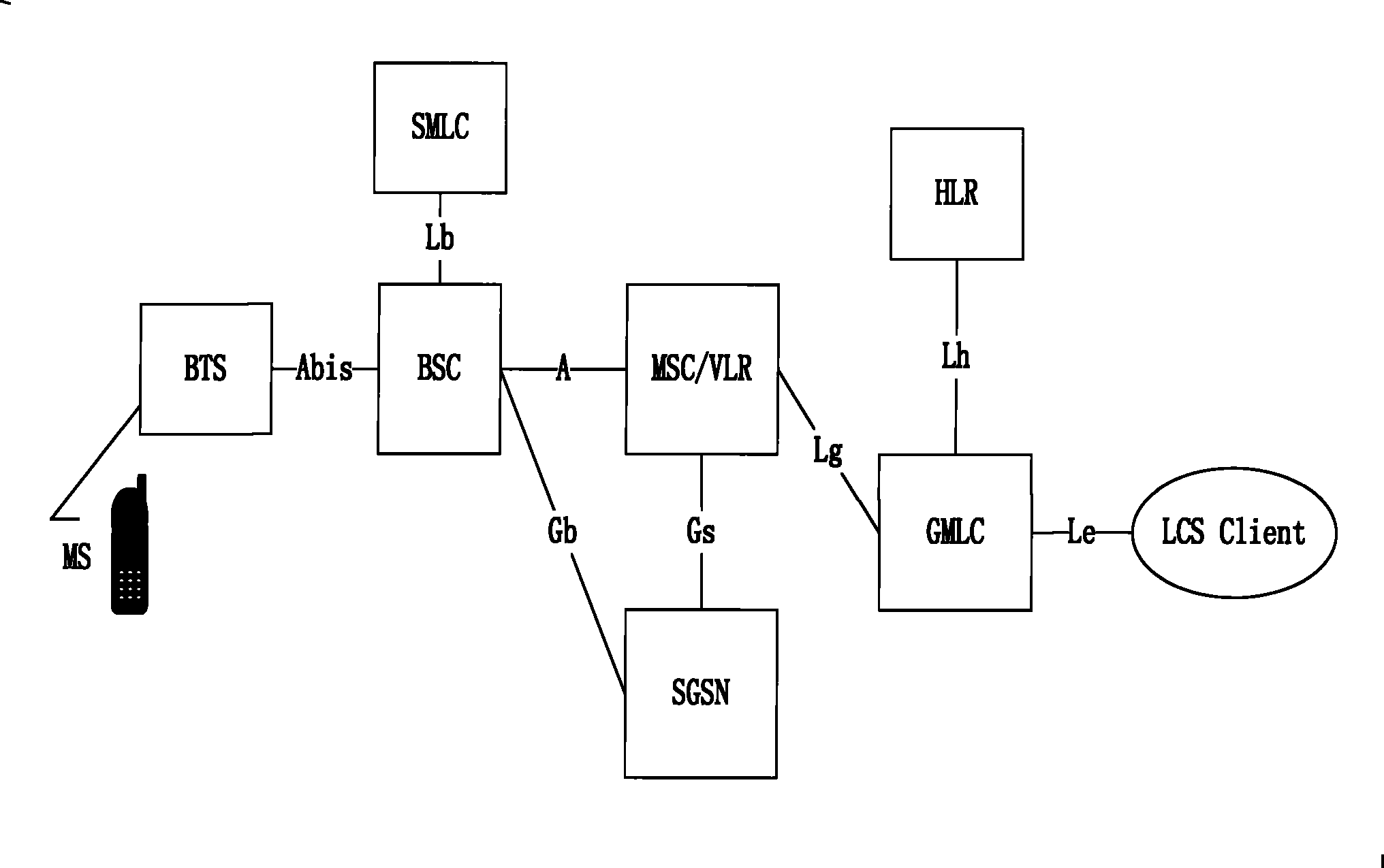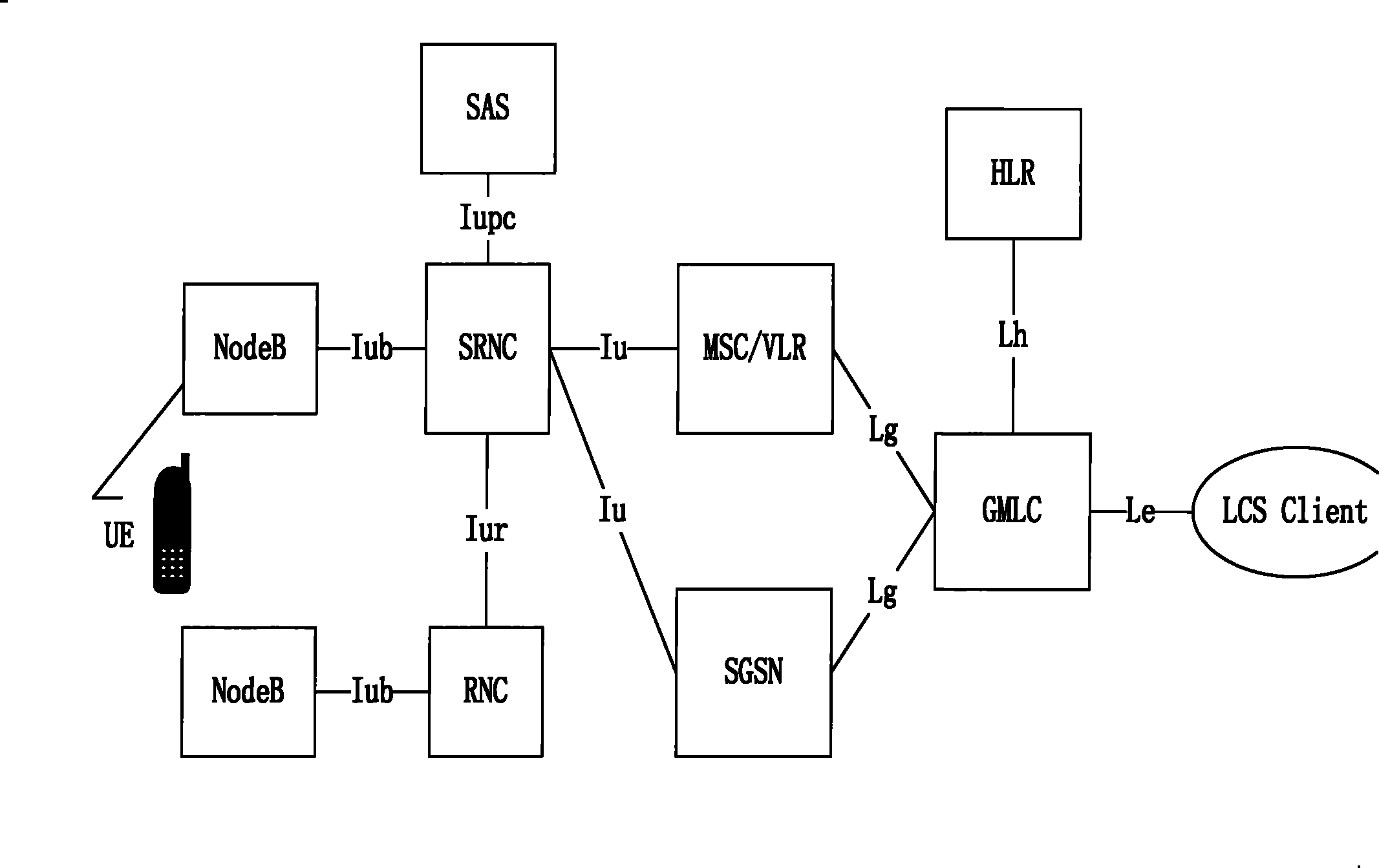Method and system for providing positioning service
A positioning service and positioning technology, which is applied in the direction of electrical components, wireless communication, network data management, etc., to improve reliability and success rate, reduce costs, and avoid the decline in business success rate
- Summary
- Abstract
- Description
- Claims
- Application Information
AI Technical Summary
Problems solved by technology
Method used
Image
Examples
Embodiment 1
[0056] as attached image 3 As shown, it describes the signaling process in which GMLC first obtains user routing through SRI for SM signaling (message), and then obtains user location information from the core network through PSL signaling. This processing method is suitable for the case where the user identifier in the location request is MSISDN. The following discusses the specific process of using this signaling process to achieve positioning:
[0057] Step 101. First, the positioning client initiates a positioning request to the GMLC through the Le interface to the mobile user in the 2G / 3G hybrid network, and the identification of the positioned user in the positioning request is MSISDN;
[0058] Step 102. In a network environment with a number portability policy, if the identity of the located user is MSISDN, the GMLC cannot simply judge whether the user belongs to the operation based on the user's number after receiving the location request; Under the circumstances, i...
Embodiment 2
[0066] as attached Figure 4 As shown, it describes the signaling process that the GMLC first obtains the user route through the SRI for LCS signaling, and then obtains the user location information from the core network through the PSL signaling. This processing method is applicable to the situation that the user identifier in the location request is an IMSI, and the IMSI belongs to the operator according to the judgment of the GMLC. The following discusses the specific process of using this signaling process to achieve positioning:
[0067] Step 201, firstly, the positioning client initiates a positioning request to the GMLC for the mobile user in the 2G / 3G hybrid network through the Le interface, and the identification of the positioned user in the positioning request is IMSI;
[0068] Step 202. In this case, the GMLC can directly use the MCC or MNC in the IMSI to determine whether the user belongs to the operator; if the user does not belong to the operator, the GMLC can ...
Embodiment 3
[0076] as attached Figure 5 As shown, it is described that when the PSL signaling sent by the GMLC to the core network cannot be served normally, it is necessary to obtain the location information of the user in a fallback manner. At this time, the GMLC knows according to the prior configuration that the user location can be obtained from the HLR by using the ATI signaling with the current location identifier, so it chooses to use this signaling to perform fallback processing when the PSL fails. The configuration may be a simple global configuration, or a configuration for different HLRs. The following discusses the specific process of using this signaling process to achieve positioning:
[0077] Step 301, this step is the same as the processing of step 101 in the first embodiment;
[0078] Step 302, this step is the same as the processing of step 102 in the first embodiment;
[0079] Step 303, this step is the same as the processing of step 103 in the first embodiment;
...
PUM
 Login to View More
Login to View More Abstract
Description
Claims
Application Information
 Login to View More
Login to View More - R&D
- Intellectual Property
- Life Sciences
- Materials
- Tech Scout
- Unparalleled Data Quality
- Higher Quality Content
- 60% Fewer Hallucinations
Browse by: Latest US Patents, China's latest patents, Technical Efficacy Thesaurus, Application Domain, Technology Topic, Popular Technical Reports.
© 2025 PatSnap. All rights reserved.Legal|Privacy policy|Modern Slavery Act Transparency Statement|Sitemap|About US| Contact US: help@patsnap.com



